UBER IN EMERGENCY
A STUDY QUESTION
During the Digital Tools & Big Data I seminar, we learned how to connect to the API of digital platforms such as Uber or Twitter in aim to collect and analyze the real time data using Python. In this case we requested data from Uber to run the investigation, whether Uber can be considered as an alternative to ambulance in an emergency situation.
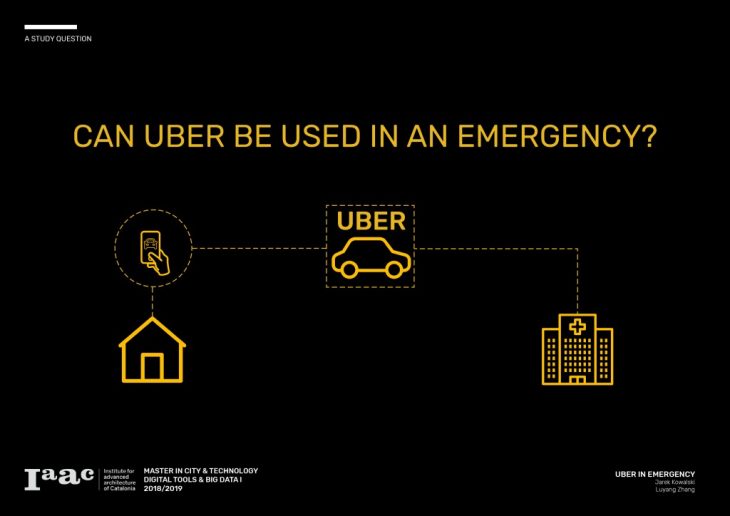
MAPPING POINTS
Elderly care homes
To answer this question, we selected Elderly Care Homes in the city of Barcelona from Open Data BCN platform as our pickup points. According to Uber Usage Statistics (2018), people over 55 years old constitute only 6% of Uber users in the US.
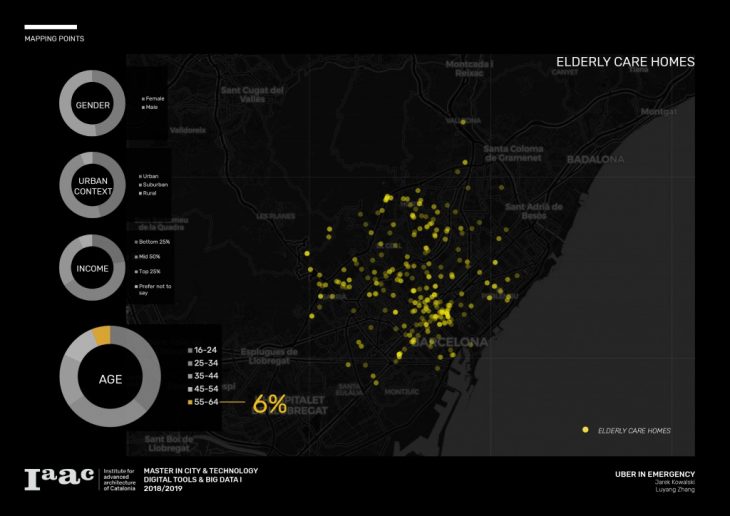
Hospitals
Secondly, we selected all the Hospitals in the city of Barcelona as our destination points. According to Uber Usage Statistics (2018), hospitals are the second most popular destination for Uber rides in the US.
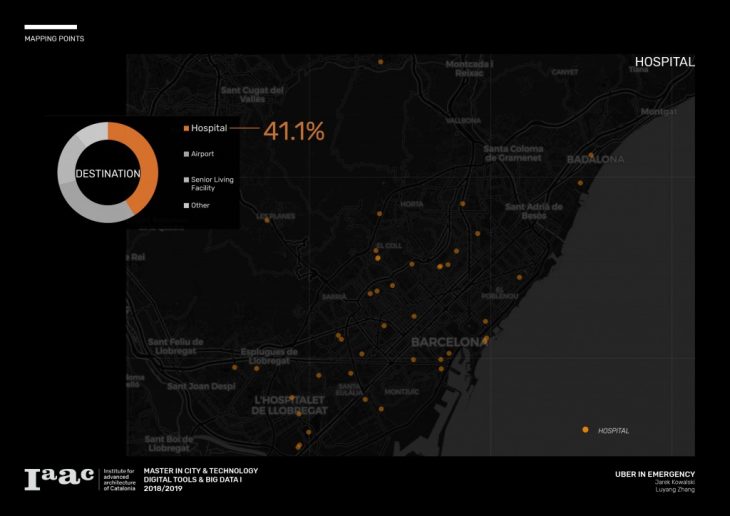
For each of the elderly care homes we chose the nearest hospital
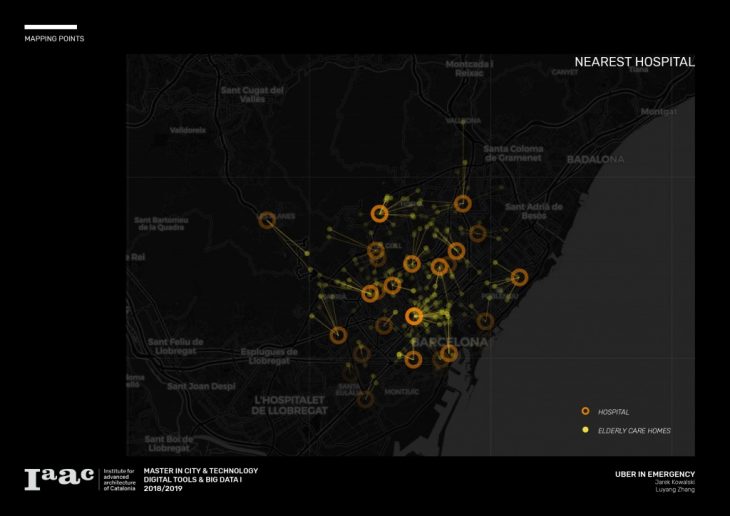
Create routes
And by using Openroute Service we were able to measure the distance between the elderly care homes and the nearest hospital for each one of them in urban conditions. In 95,6% cases the distance was not greater than 3625 meters.
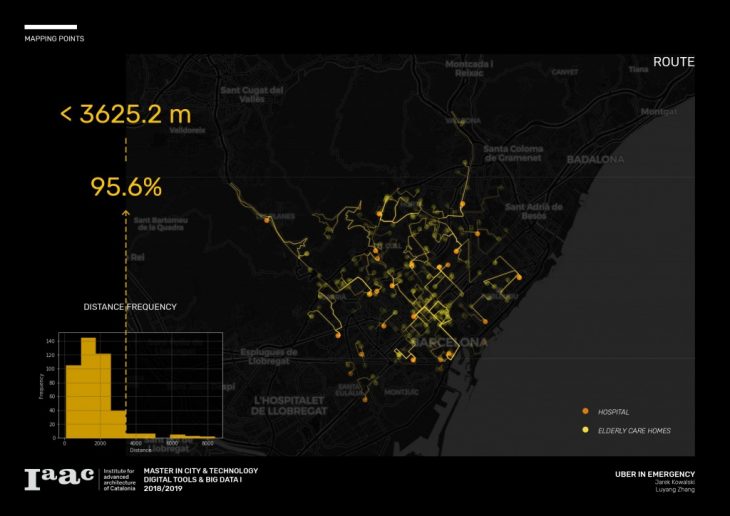
UBER DATA ANALYSIS
Then we run our investigation by measuring the waiting time and the duration of Uber ride in one-hour intervals during one day (Sunday) for each pair of points.
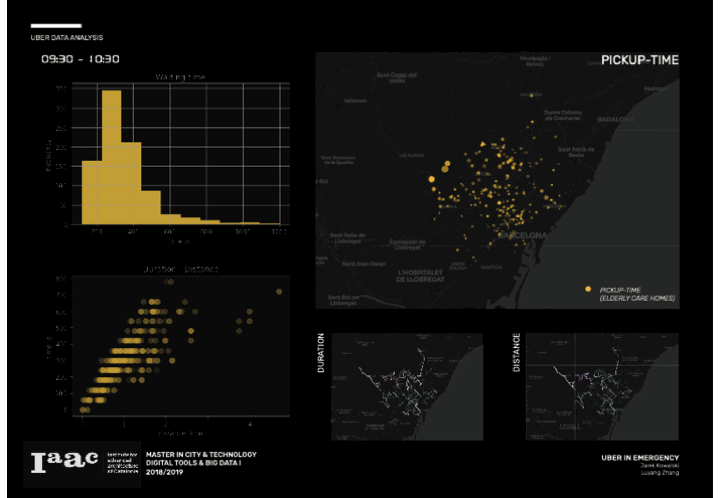
During this investigation we found out that larger differences over one day occur in the pickup time than duration of the ride. While the duration of the ride is within 5 minutes of all measurements, the waiting time is definitely longer in the morning hours (about 9 minutes) than in the afternoon and evening hours (about 5 minutes). Based on that, we can assume that the availability of Uber drivers rather than urban traffic has a greater impact on the length of the entire process.
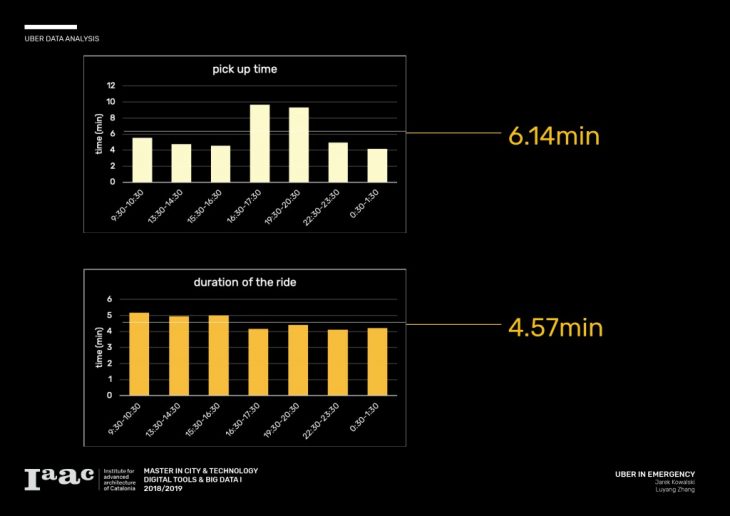
CONCLUSION
Answering the question stated at the beginning, whether Uber can be used in emergency situation, in case of Barcelona and elderly care homes, we can say that even during the afternoon hours when the waiting time is the shortest, taking Uber still takes longer than average waiting time for an ambulance which is 8 minutes.
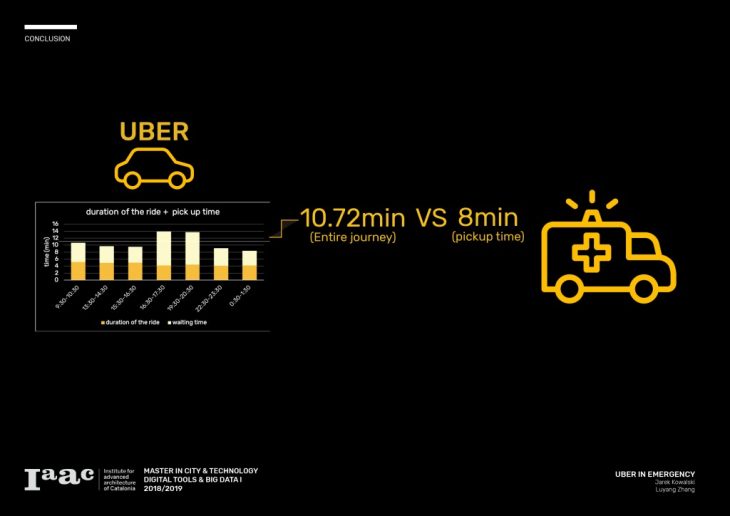
UBER IN EMERGENCY is a project of IaaC, Institute for Advanced Architecture of Catalonia developed at Master in City and Technology in 2018/2019 by:
Students: Jaroslaw Kowalski and Luyang Zhang
Faculty: Starsky Lara